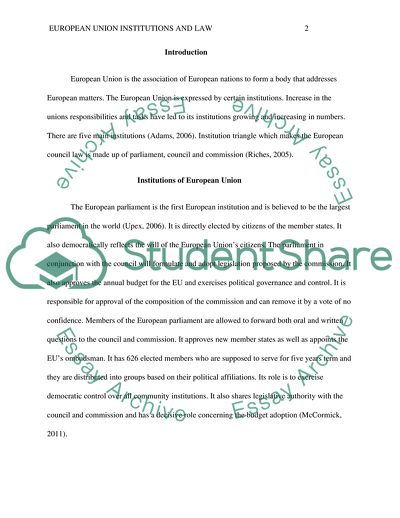Cite this document
(European Union Institutions and Law Coursework Example | Topics and Well Written Essays - 1500 words - 2, n.d.)
European Union Institutions and Law Coursework Example | Topics and Well Written Essays - 1500 words - 2. https://studentshare.org/law/1817121-what-are-the-principal-institutions-of-the-european-union-to-what-extent-do-these-institutions-engage-with-the-sources-of-eu-law
European Union Institutions and Law Coursework Example | Topics and Well Written Essays - 1500 words - 2. https://studentshare.org/law/1817121-what-are-the-principal-institutions-of-the-european-union-to-what-extent-do-these-institutions-engage-with-the-sources-of-eu-law
(European Union Institutions and Law Coursework Example | Topics and Well Written Essays - 1500 Words - 2)
European Union Institutions and Law Coursework Example | Topics and Well Written Essays - 1500 Words - 2. https://studentshare.org/law/1817121-what-are-the-principal-institutions-of-the-european-union-to-what-extent-do-these-institutions-engage-with-the-sources-of-eu-law.
European Union Institutions and Law Coursework Example | Topics and Well Written Essays - 1500 Words - 2. https://studentshare.org/law/1817121-what-are-the-principal-institutions-of-the-european-union-to-what-extent-do-these-institutions-engage-with-the-sources-of-eu-law.
“European Union Institutions and Law Coursework Example | Topics and Well Written Essays - 1500 Words - 2”. https://studentshare.org/law/1817121-what-are-the-principal-institutions-of-the-european-union-to-what-extent-do-these-institutions-engage-with-the-sources-of-eu-law.


